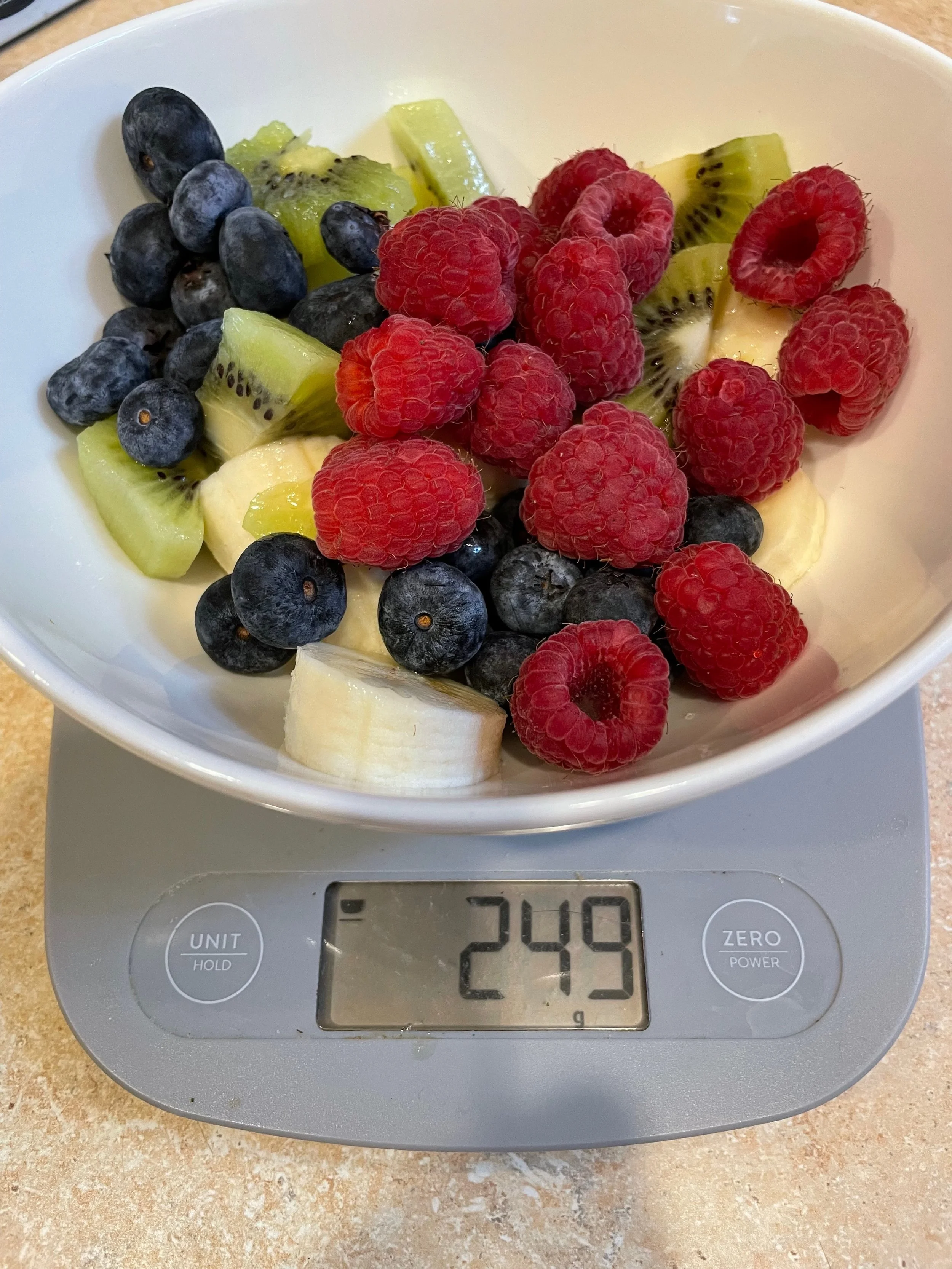TRACKING MACROS AS A TOOL
When people hear the words “tracking macros,” they often picture a rigid, numbers-driven approach to eating that can feel overwhelming or even obsessive. Many wonder why or how tracking macros is any different than other diets, and it’s a great question!
When used as a temporary tool, macro tracking – monitoring the protein, carbohydrates, and fats that you are eating in a given day, and over time – can help you develop an awareness of your food choices, build sustainable habits, and make informed decisions about what’s best for your body. In my personal experience and in working with clients, I’ve seen transformative shifts in mindsets and relationship with food through this method.
WHY TRACK MACROS?
At it’s core, macro tracking is simply a tool that goes hand in hand with the idea of flexible nutrition, which we can use to meet our nutritional goals without sacrificing the foods we love.
At its core, tracking macros is an educational tool:
It’s a tool to help gain insight and accountability into what we’re actually consuming versus what we think we’re consuming.
It’s a tool to help build awareness around portion sizes.
It’s a tool to help understand the macronutrient composition of our meals, and in turn to understand how different compositions alter the way we might feel after a meal.
It’s a tool to help tune into when we are diving into a more rigid nutritional phase, like a calorie deficit.
Over time, tracking your intake builds a strong foundation of knowledge that can be carried with you even after you’ve stopped tracking.
GETTING STARTED WITH TRACKING YOUR MACROS
When setting your macro targets, there are several factors to consider, like your current weight, age, goals, lifestyle, activity level, and even your dieting history. While online macro calculators can be a great starting point, they don’t always capture the whole picture. Whether your goals are aesthetic (losing body fat or leaning out), performance-based (building muscle or improving endurance), or focused on overall health (developing healthier habits or a better relationship with food), your macro targets will guide you toward those changes — whether that means a calorie deficit, maintenance, or surplus.
MAINTENANCE CALORIES | At your maintenance intake, you’re burning the same number of calories you’re consuming. Ideally, we are spending most of our time in a maintenance phase (at least 75% of every year). If your goal is to maintain your weight and prioritize energy, sleep, and overall health, this is where you should be focusing.
CALORIE DEFICIT | This happens when you’re burning more calories than you're eating; it is a target that is lower than your maintenance and is sometimes referred to as a “cut.” If fat loss is your goal, being in a calorie deficit is key. However, it should only be a temporary (typically 8-16 weeks) phase, since eating less can affect your energy and performance. You will very likely feel a bit more hungry or fatigued during this time.
CALORIE SURPLUS | When you’re eating more calories than you're burning, you’re in a surplus; this is sometimes called a “bulking” phase. This is essential if you’re trying to put on weight or build muscle mass. If you’re working towards performance goals, you’ll likely want to be at maintenance or in a surplus, depending on your training.
NEXT STEPS
Ready to get started? Some helpful next steps:
Download a tracking app; my favorites are Cronometer, MacrosFirst, and MyFitnessPal. Your goal is to hit your target macronutrient numbers as closely as possible each day, prioritizing overall calories and protein intake
Invest in some kitchen “tools” that will be helpful to this journey:
A kitchen scale – this one is my favorite.
Prepping containers (I use these and love the different sizes and snapping lids)
Cooking gadgets like a crockpot, air fryer, or Instant Pot can be helpful
A good kitchen knife can be a game-changer; yes, these are often an investment piece in the kitchen, and they pay their way when you get going on chopping foods as you prepare meals (this one is, without fail, the first knife my husband and I grab from our knife block)
Special shoutout here to my onion goggles – they are so silly looking, but I haven’t cried cutting an onion in almost a decade because of them!
Get started! The best way to get better at tracking is to put in the repetitions to make it a habit.
And while tracking may not be for everyone, I firmly believe that most people could benefit from even just a temporary season of tracking. The work that you put in during a chapter of tracking can help to write a future of knowledge and experience – one that gives us the freedom and flexibility to adjust and modify daily nutritional choices without consulting a food scale or tracking app.
This is the ultimate goal — using macro tracking as a stepping stone to eating more intuitively and long-term habit and mindset change. Once you’ve built the foundation, you’ll feel more confident in your ability to make food choices that support your health, performance, and overall happiness without needing to log every meal.
As a nutrition coach, my goal is to help you develop a healthier relationship with food and establish habits that will last far beyond the time we work together. Macro tracking is just one tool in the toolbox, and when used with intention, it can be incredibly powerful in helping you reach your goals and build a sustainable, fulfilling approach to nutrition. Learn more about guidance and support from a coach can help you find tools to help you meet your goals.

